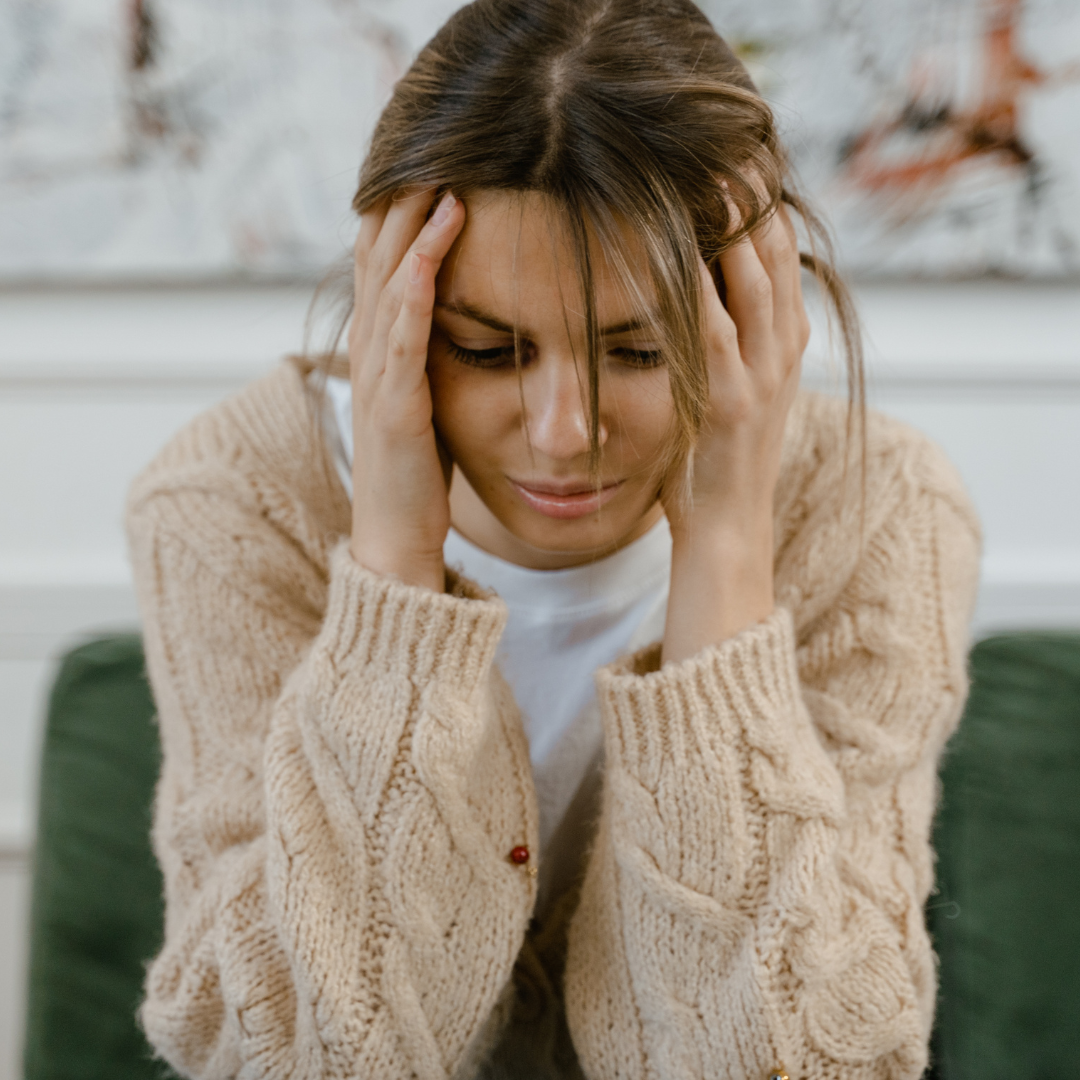It’s that time of year again. The cold, dreary days of winter are upon us. The temperature drops, and it gets darker earlier, which means more time indoors and yes, you guessed it: hibernation mode. Needless to say, winter can be downright depressing.
Science confirms the lack of sunlight does affect our mood. In fact, many people suffer from Seasonal Affective Disorder (SAD), a type of depression that's associated with the change in seasons.
Seasonal Affective Disorder: Causes and Symptoms

SAD is a type of depression that begins and ends around the same time each year. When we are exposed to less sunlight, something interesting happens in the body.
When sunlight enters your retina, serotonin is released. This explains why during the shorter, darker days of winter people are more likely to experience depression. A decrease in serotonin also means a decrease in energy and mood.
“With SAD, the lack of sunlight causes the brain to work overtime producing melatonin, the hormone that regulates your body clock and sleep patterns and a hormone that has been linked to depression,” WebMD reports. “That's why all things considered, the farther north from the equator you live, the greater the risk you'll have some degree of winter depression.”
When melatonin is produced in higher levels, this often leads to fatigue and low energy. In addition, serotonin levels go down, which impacts appetite and mood – and when serotonin is too low, this can cause depression.
Geography also plays a major role in seasonal affective disorder. SAD is more likely to occur in northern regions due to shortened daylight hours in the winter and longer days in the summer.
Lastly, there is a genetic component to SAD. Research shows that seasonal affective disorder runs in families, and interestingly, is more common among women.
Here are symptoms you be suffering from SAD:
- Low energy
- Trouble sleeping
- Feeling depressed most of the day
- Have a hard time focusing
- Changes in your appetite
- No longer interested in activities you once enjoyed
- Have thoughts of death or suicide (in extreme cases)
Being able to recognize the problem is important. If you can’t diagnosis it, then you can’t treat it.
“Early signs of seasonal affective disorder (SAD) can be subtle,” says Normal Rosenthal, MD, pioneer in SAD research. “Decreased energy, fatigue, wanting to sleep more, craving those candies and pastas, slacking off at work – all classical symptoms of SAD or its milder variant, the Winter Blues, can easily be attributed to many other causes. But put them all together – along with feelings of anxiety, sadness or dread – and the likely cause becomes obvious: our old friend (or foe), the Winter Blues or SAD has come to visit us once again. But catch it early, and you’re ahead of the game.”
While we all may experience one or two of these symptoms during the winter months, it becomes a problem when you start checking off the majority of the list.
Deborah Pierce, MD, clinical associate professor of family medicine at the University of Rochester School of Medicine and Dentistry, explains “It is important to treat SAD, because all forms of depression limit people's ability to live their lives to the fullest, to enjoy their families, and to function well at work.”
6 Tips to Beat SAD
Are you or someone you know suffering from SAD? Here are several science-backed tips to combat winter depression:
- Try a sunbox

If you’re experiencing the winter blues, it’s time to look on the bright side (literally).
While getting enough natural sunlight can be difficult during the winter months, sunboxes were designed specifically for this reason. Used in light therapy, sunboxes have fluorescent tubes that emit light similar to the sun's rays, and are becoming increasingly popular among people who suffer from seasonal depression.
Experts recommend 30 minutes of exposure in the early morning. According to WebMD, "Timing is very important, and by administering it first thing in the morning, you keep your body clock on its springtime cycle during the winter, and that's how the depressive symptoms are lifted."
With 70 percent of patients on average reporting improvements, it’s the most recommended form of therapy for SAD.
To take your light therapy to the next level, try incorporating aromatherapy into the mix. Essential oils are proven to help boost mood, and reduce anxiety and depression. For people suffering with SAD, check out this Energy Roll-On.
- Eat healthy
Do you notice that you crave more food in the winter? There is actually a scientific explanation for this.
Research shows that SAD patients crave “bad carbs” more, and it’s these cravings that cause winter weight gain. Bad carbs include bread, white rice, and pasta.
“Add to the carb cravings the low energy that plagues SAD sufferers during the winter months—the same people who, during the summer months, may have the energy to fix a healthy meal full of whole vegetables, unsaturated fats, and fiber—and you can see how the battle against weight gain can be all uphill during the winter,” says Yasmine Ali, MD.
It's scary how quickly this becomes a negative cycle. When you’re depressed, you eat more. Then, when you gain weight you become even more depressed. Yikes!
The good news is that you can make simple dietary changes, specifically to help alleviate the symptoms of SAD. In other words, it’s about finding foods that will keep your hormones balanced and increase your serotonin levels. This includes leafy green vegetables, fish and lean protein.
- Exercise

We get it. Going to the gym is the last thing you want to do when you’re feeling down. But research shows that exercise works wonders for depression, including SAD.
In fact, walking on a treadmill for 30 minutes for 10 days in a row can significantly reduce symptoms of depression. Exercising triggers the release of endorphins, the body’s natural “feel-good” chemicals.
It’s important to note that you don’t need to engage in intensive training for hours on end to reap the benefits of exercise.
“Certainly running, lifting weights, playing basketball and other fitness activities that get your heart pumping can help,” Mayo Clinic reports. “But so can physical activity such as gardening, washing your car, walking around the block or engaging in other less intense activities. Any physical activity that gets you off the couch and moving can help improve your mood.”
When it comes to working out, it’s about consistency rather than intensity.
- Spend time outdoors
Since it’s not as frequent, take advantage when the sun is shining! Researchers have discovered there is, in fact, a link between vitamin D deficiency and depression, so do everything you can to soak up the sun (don’t forget sunscreen, of course!)
Even if it’s cold, bundle up and go for a walk - 15 minutes is all you need to see a difference in your mental state.
According to one study, walks in the forest were proven to lower anxiety and boost mood. In another study of depressive disorders, walking outdoors can be "useful clinically as a supplement to existing treatments."
On the days when natural sunlight isn’t an option, BoomBoom’s Wintermint nasal inhaler will awaken your senses and boost your mood with its stimulating scent.
- Cognitive behavioral therapy (CBT)
This well-known form of psychotherapy is designed to help people break negative thought patterns. For this reason, CBT is a popular therapeutic method for patients with depression and mental health illnesses.
What about people with SAD? According to a recent study published in the American Journal of Psychiatry, CBT can also help treat patients with seasonal affective disorder.
In the study, researchers examined 177 people with seasonal affective disorder. Over a six-week period, participants were treated with light therapy or cognitive behavioral therapy designed for SAD and then followed up with them over the next two winter seasons.
When researchers checked in during the first winter, light therapy and CBT were on par in terms of efficacy and lessening symptoms of depression. However, the second time they looked at participants, CBT produced more positive results. Post-treatment, 27.3 percent of CBT patients had depression return the next winter compared to 45.6 percent of patients who received light therapy.
- Practice meditation and mindfulness

Meditation is “a great way to reduce excess stress, which is bad in general, and especially bad if you have SAD or the Winter Blues,” says Rosenthal.
By incorporating meditation and mindfulness into your daily routine, this will train your brain to react better during times of anxiety and depression.
“Mindfulness is just like exercise. It’s a form of mental exercise, really,” says Sara Lazar a neuroscientist at Massachusetts General Hospital and Harvard Medical School. “And just as exercise increases health, helps us handle stress better and promotes longevity, meditation purports to confer some of those same benefits.”
But, just like exercise, it can’t cure everything. So, the idea is, it’s useful as an adjunct therapy. It’s not a standalone.”
Are you ready to beat the winter blues this year? By combining several of the tips above, you will increase your chances of seeing positive results.
